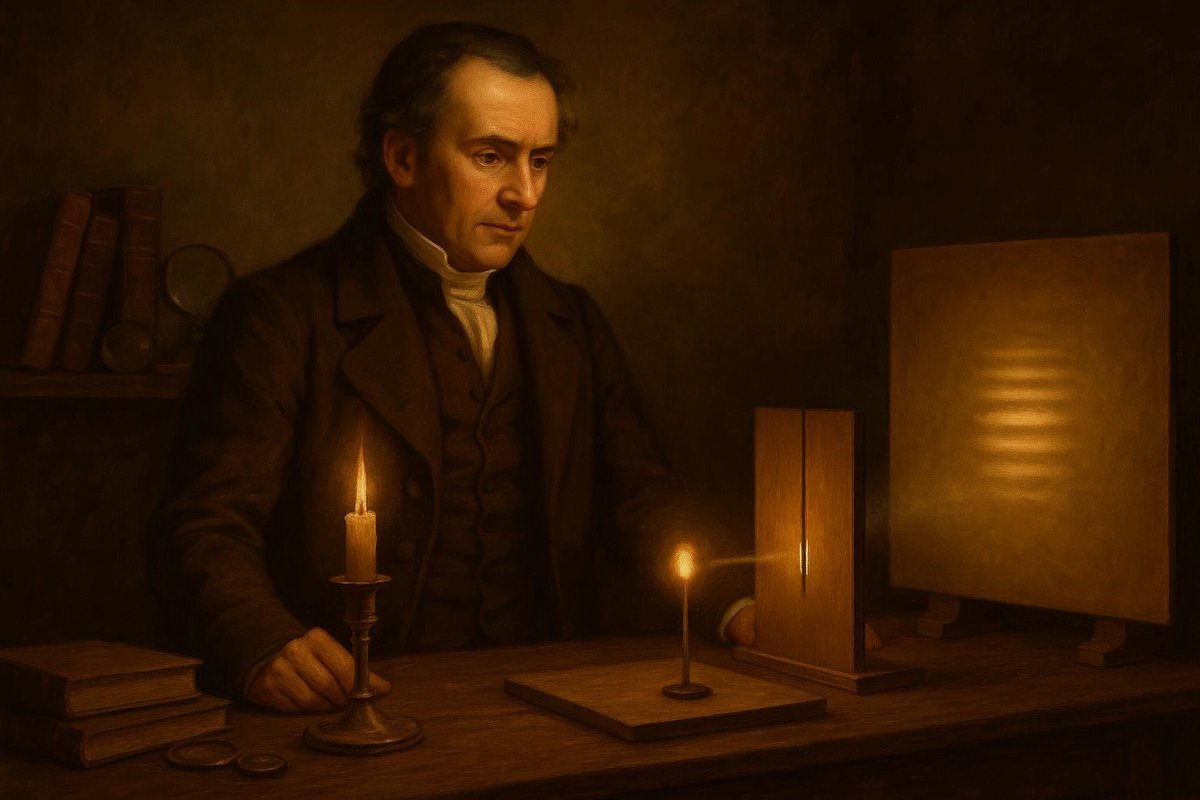
Introduction: Light and Its Enigmatic Dance
Have you ever wondered why light behaves so mysteriously? It can illuminate our paths, paint rainbows in the sky, and even, intriguingly, act like both a wave and a particle. This puzzling behavior is beautifully captured in Thomas Young’s Double-Slit Experiment, a cornerstone of quantum mechanics. Let’s dive into this captivating journey and explore how Young’s insight unwrapped the enigmatic dual nature of light.
Hypothesis & Context
In the early 19th century, the nature of light was hotly debated. Some believed it was a particle, while others argued it was a wave. Thomas Young, a curious polymath, had a hypothesis that light behaved as a wave. But how could one prove such an idea?
- Young hypothesized that if light were a wave, it would produce interference patterns.
- This hypothesis was in direct contrast to Newton’s particle theory of light.
In a time when Isaac Newton’s particle theory dominated, Young faced skepticism. Yet, his curiosity and determination drove him to test his hypothesis through experimentation. As Young prepared to challenge the established norms, he set the stage for a discovery that would ripple through scientific thought and forever change our understanding of light.
Setup & Method
Picture this: a darkened room in 1801, where Young carefully prepares his experiment. With a simple apparatus, he set up a light source to shine through two closely spaced slits, projecting onto a screen. What did he expect to see?
- The light source was positioned to pass through two slits, creating two waves.
- As the light waves overlapped, they would interfere with each other.
Young’s method was elegantly simple yet profound. He aimed to observe the pattern that emerged on the screen when the light passed through the slits. If his theory was correct, the interference pattern would reveal alternating bands of light and dark, a testament to light’s wave nature. This setup was pivotal, as it visually demonstrated a fundamental concept of wave behavior, challenging the Newtonian view and opening the door to new interpretations.
Results & Reactions
When Young observed the screen, he saw the telltale interference pattern—a series of bright and dark fringes. This was a visual confirmation of light behaving as a wave, a revelation that was both simple and revolutionary.
- The interference pattern was undeniable proof of wave behavior.
- Young’s findings challenged the prevailing particle theory of light.
The scientific community was astounded, yet divided. Young’s results sparked vigorous debate, challenging deeply held beliefs about light. His work was published in 1803, and although some resisted, the implications of his findings began to take root. Young had not only confirmed his hypothesis but had also set the stage for future explorations into the dual nature of light, paving the way for quantum mechanics as we know it today.
Implications
Young’s Double-Slit Experiment didn’t just illuminate a single scientific concept; it opened the door to the strange and wonderful world of quantum mechanics. The experiment showcased the wave-particle duality that is now a cornerstone of modern physics.
- It challenged existing theories and inspired future scientific inquiry.
- Wave-particle duality became a foundational concept in quantum mechanics.
This experiment ignited a revolution in understanding the nature of light, influencing the likes of Albert Einstein and further developments in quantum theory. It stands as a testament to the power of curiosity and the importance of challenging established ideas. Young’s insights not only enriched our understanding of physics but also shaped the way we think about the universe itself.
Conclusion: A Legacy of Curiosity
Through Young’s eyes, we learned that embracing curiosity and challenging conventional wisdom can lead to groundbreaking discoveries. The Double-Slit Experiment remains a remarkable testament to the intricate dance of light, inspiring generations of scientists to explore the quantum realm.
Fuel Someone Else’s Curiosity
Share this story with a friend or a fellow science enthusiast. Encourage them to ponder the mysteries of the universe and maybe, just maybe, light the spark of curiosity in someone else. Together, we can explore the wonders of science and continue to question, learn, and grow.

Leave a Reply